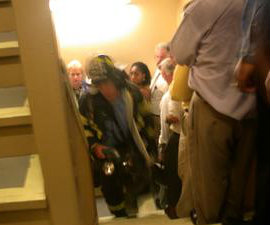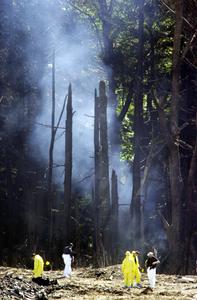September 11: Teaching Tragedy
Updated August 2023
 As the twenty-second anniversary of the September 11, 2001 attacks nears, you can visit Olivia B. Waxman’s 2019 TIME article, 9/11 Is History Now. Here’s How American Kids Are Learning About It in Class. As Waxman points out, students in schools now see 9/11 as history while it is still alive in the memory of teachers, whether they were adults or students in 2001.
As the twenty-second anniversary of the September 11, 2001 attacks nears, you can visit Olivia B. Waxman’s 2019 TIME article, 9/11 Is History Now. Here’s How American Kids Are Learning About It in Class. As Waxman points out, students in schools now see 9/11 as history while it is still alive in the memory of teachers, whether they were adults or students in 2001.
This article reports on a study of state standards and also on how coverage in text books has lessened over the years and how use of online and nonprofits’ resources has increased. The article touches on use of 9/11 images and video in the classroom.
This year the 9/11 Memorial & Museum invites students and teachers from around the world to commemorate the 22nd anniversary of 9/11 by registering for the FREE 9/11 Anniversary Digital Learning Experience (formerly the Anniversary in the Schools program). “View a film highlighting first-person accounts of the attacks and their aftermath and connect with Museum staff in real-time through an interactive live chat. The 30-minute program will be available on demand beginning Monday, September 11, 2023.”
The museum also provides modules in its 9/11 Primer and Talking to Children about Terrorism. Teachers and librarians can register to download educational posters and related materials.
The Smithsonian continues to offer its September 11: Bearing Witness to History. Along with blog posts, the site also links to the extensive resources of the three memorial websites. Though some of the links from its 2011 collections no longer work, others link to a digital archive of on-site photographs and objects from the World Trade Center, the Pentagon and Shanksville, Pennsylvania.
Among the many 9/11 resources available through the National Archives are a selection of letters written by children soon after the attacks and a collection of primary resources from the 9/11 Commission.
Also for teachers, Pam Moran makes the argument for including 9/11 in students’ study of history in a NYT Learning Network post from 2011. The Learning Network also posted teachers’ 9/11 lesson ideas and projects.
National Geographic offers an article on the heroes of September 11 and the days following the attacks. Heroes of 9/11 by Kate Boatner and Libby Romero includes the people who used their boats and ferries to rescue almost 500,000 on 9/11 as well as the residents of Gander, Newfoundland, who for several days sheltered thousands of passengers of planes ordered to land immediately after the attacks. Boatner and Romero have also written Remembering 9/11, recounting events as they unfolded and summarizing government response in the decades since. The article provides a succinct overview for older middle grades students.
If you decide to use video and audio of the attacks, the History Channel provides timelines and interactive maps with linked video clips. The recently updated site also contains resources on the rebirth of the World Trade Center.
CNN offers a 2020 look back, including video of the attacks, here.
The anti-Muslim/anti-foreigner hate crimes that erupted immediately following 9/11 continued. In 2011 a Joplin, Missouri mosque was burned and a Murfreesboro, Tennessee Islamic center opened after months of vandalism, arson, and court challenges. In the same month a gunman killed six members of the Sikh community in Oak Creek, Wisconsin as they worshiped. This op-ed article in the Atlanta Black Star expresses concern about the lack of “national outrage.”
Students can see how writers respond to loss in “The Names,” a poem by former poet laureate Billy Collins, read at PBS News Hour September 11, 2011. The video features photographs of people killed on 9/11.
In a Book Whisperer post on books to build community in the classroom, Donalyn Miller recommends 14 Cows for America by Carmen Agra Deedy. The book recounts how Maasai villagers in Kenya responded to the 9/11 attacks by giving 14 cows, their most prized possessions, to America.
More from MiddleWeb
Find many more resources, including middle grades books, in Kasey Short’s 2021 post, Resources for Teaching 9/11’s 20th Anniversary.
In another 2021 article Dr. Rose Reissman presents The Ditmas 9/11 Project Rejects “Learning Loss” explaining how middle school educators at Brooklyn’s Ditmar IS 62 chose to overcome pandemic related “learning loss” by engaging their sixth, seventh and eighth graders in a long-range project documenting the tragic story of 9/11 through research, oral family and community history, and literacy activities.
______
Photos: From the Smithsonian, SEPTEMBER 11 BEARING WITNESS TO HISTORY: WTC stairway by John Labriola, an eyewitness going to work, Shanksville by Tim Shaffer of Reuters, Pentagon by firefighter Jon Culberson




































This sure has enlightened me more about this specific aspect. Thank you!